The West Coast of Scotland – An Island Fortress – A Sea and land Nuclear Death Zone
The west coast of Scotland is one of the most intricate and beautiful landscapes in the world.
Children, when asked to draw maps of Britain, usually depict it as a muddle of spikes and blobs reaching into the Atlantic.
From the Solway Firth in the south to Cape Wrath in the north, estuaries and sea lochs bite far into the high and uneven ground of the mainland.
Offshore lie 589 islands, as well as numerous rock islets and reefs.
The largest and most westerly chain, the Outer Hebrides, provides a 150-mile-long barrier to the wind and seas which blow and swell, uninterrupted by land, all the way from North America.
The barrier means that coastal waters are relatively sheltered. Glaciation has also made them remarkably deep.
In the few miles between the island of Raasay and the mountains of Torridon the sea reaches down in places for more than 1,500 feet—the greatest sea depth off the British coast.
North of the Firth of Clyde there are very few towns or large villages, and none other than Oban and Stornoway of a scale that might support a medium-sized supermarket.
The population of the Hebrides peaked in the census of 1841, but then came clearances and potato blight and the vanishing of the herring shoals.
Large tracts of the west coast are empty, visible life confined to sea birds, seals, rabbits, deer, and the descendants of the sheep that Highland landlords exchanged for people (deported to Glasgow and Canada) in the nineteenth century.
These conditions—deep water, few people on the land, plus easy access to Soviet navy routes—made the west coast of Scotland an ideal place to maintain, test and store all kinds of weaponry during the Cold War.
And to continue a technical, military history that began a hundred years ago with torpedo ranges in the Clyde sea lochs and anthrax trials which poisoned the island of Gruinard (the plan, ‘Operation Vegetarian’, was to wipe out Germany’s cow population by bombing them with anthrax-infected cattle feed).
Today, the Scottish west coast continues to be the most heavily armed region of Britain and quite possibly Europe, offering mountains and glens for low-flying fighter and bomber exercises, sea and moorland for uranium-depleted artillery fire, underground storage for nuclear weapons and naval fuel, emergency moorings for nuclear submarines.
The loveliness of the changing light on sea and mountain makes it hard to imagine the ominous technology buried beneath.
The missile testing range on South Uist, now run by the Anglo-American defence company QinetiQ, was set up in the 1950s to test the Corporal nuclear missile system bought from the USA.
It is one of the busiest such ranges in the world, and one of the longest, stretching far into the Atlantic. In a secret report from 1981, declassified in 2002, the Naval Radiation Protection Services (NRPS) discovered that between 1967 and 1980 the launching site and surrounding area had been contaminated by large amounts of Cobalt-60, a radioisotope sprayed from the back of moving missiles to help radar track them.
The report concluded that ‘both the ammunition technicians at RA Range Hebrides and possibly the general public were being placed at unnecessary radiological risk’.
An earlier investigation in 2002 found that 352 drums of waste from the decontamination process were buried at the range.
Most submarine exercises in Europe take place off the west coast of Scotland.
Following the sinking of the trawler Antares by the submarine Trenchant in 1990, a system called ‘Subfacts’ was introduced.
This divides the seas off the west of Scotland into ‘Submarine Exercise Areas’ (SEAs) and a daily broadcast tells fishermen which to avoid.
In November 2002, the nuclear-powered submarine Trafalgar crashed into the Isle of Skye at fifteen knots and a depth of fifty metres while practising torpedo evasion tactics.
The most north-westerly point on the British mainland is an 8,400-acre weapons range and army exercise area.
Cape Wrath (a Norse word for ‘turning point’) has the highest sea cliffs on mainland Britain.
The Naval Gunfire Support Range is used by Royal Navy and other NATO vessels as a practise area for 4.5-inch and 5-inch guns.
The cliffs, an important nesting ground for birds, rise to almost 1,000 feet and are used as ranging marks for the guns.
Nearby Garvie Island is the only place in Europe where aircraft can drop live 1,000lb bombs.
Cape Wrath assumed greater importance when US ships lost access to ranges in Puerto Rico in 1999 after a civilian was accidentally killed.
In November 1990, the nuclear-powered attack submarine Trenchant caught the Kintyre-based trawler Antares’ nets and dragged her to the bottom of the Arran Trench, between the Isle of Arran and the mainland.All four crew of the Antares drowned.
Among the submarine crew were officers reaching the end of the six-week ‘Perisher’ submarine commanders’ course.
The subsequent inquiry blamed ‘partial breakdown in the watch-keeping structure and standards’ on board Trenchant.
Every summer, aircraft, surface ships and submarines in the west of Scotland are brought together for the ‘Neptune Warrior’ war game.
Elaborate scenarios written by military planners test the preparedness of officers and men.
These might be exercises in ‘conventional warfare’, a terrorist attack by patrol boats, ‘Bosnian enclave’-type situations, or even how to deal with troublesome members of the press.
Luce Bay is a QinetiQ-owned testing range for weapons launched from jets and helicopters.
Damage to the marine environment from bombing exercises is such that the sea bed has been fitted with special mattresses to absorb the explosions.
The bay is also used for NATO training exercises. In September 2003, a NATO exercise named ‘Northern Light’ practised a large-scale amphibious landing employing around fifty ships and submarines and thirty-four aircraft.
The Defence Evaluation and Research Agency’s Noise Range at Loch Goil can provide sound analysis of all the systems on a ship or submarine.
The loch, which is deep and quiet, is lined with hydrophones which map the unique sound signature of a vessel.
There are many fuel stores holding hundreds of thousands of tons of petroleum under Scotland’s glens.
In addition to the nuclear-powered and nuclear-armed Trident fleet at Faslane also houses five conventionally armed Swiftsure-class nuclear submarines, ships of the Third Mine Countermeasures Squadron and the Northern Ireland Squadron.
In 2001, Commachio Company of the Royal Marines was transferred to Faslane to protect the submarine fleet.
Faslane will also house the new Astute-class submarines and Trident’s replacement.
The armament testing range at Dundrennan near Kirkcudbright covers 4,500 acres and its danger zone extends over 120 square miles of the Solway Firth.
Since 1982, more than 6,000 depleted uranium shells, usually in the form of anti-tank munitions, have been fired from the range into the Solway Firth.
Most of the twenty tons of shells remain on the sea bed. Depleted uranium has a half-life of 4.5 billion years.
Dundrennan is also the planned site for controversial electro-magnetic ‘super-gun’ trials on behalf of the US military.
The gun is able to hurl a projectile at 7,500 mph, more than five times the top speed of Concorde.
Each shell will be about a foot long and as narrow as a broom handle.
The kinetic force with which it hits its target will be so great that it is unlikely to require any explosive warhead.
Faslane, the base for the Trident submarine fleet, employs 7,000 people (primarily military) and stretches along the banks of the Gare Loch behind razor wire, guarded by armed police and infrared cameras.
At the mouth of the loch is the ‘degaussing range’ at Rosneath, where submarines are demagnetized to ensure they do not trigger floating mines.
A ‘Z’ Berth is a jetty or mooring buoy for nuclear submarines in case of emergencies. Scotland has five.
When plans for the ‘Z’ Berth in Loch Ewe were discovered, all 500 residents around the loch were issued with potassium iodate tablets as a precautionary measure.
The 200-odd warheads that comprise Britain’s nuclear deterrent are stored in air-locked vaults behind concrete and steel blast doors buried in the hillside at Coulport, twenty-seven miles from Glasgow.
The Greenland-Iceland-UK Gap was a key battleground in the Cold War.
Soviet submarines based at the pens on the Kola peninsula had to pass through the gap before going on patrols around the world and could be detected and tailed.
The US took responsibility for the Greenland to Iceland sector, the UK for the rest.
The primary defence from the 1970s on was SOSUS, a system of underwater hydrophones strung out at depth across the ocean, which was said to be able to hear a submarine 1,100 miles away and pinpoint its location to an area of ten square miles.
Portpatrick, on the Scottish mainland, overlooks the narrow channel between Scotland and Northern Ireland.
At its deepest point is a long trench, Beaufort Dyke, which was used for dumping munitions and radioactive waste after the Second World War.
An estimated 1.7 million tonnes of weapons including artillery shells, phosphorous flares, mortars, incendiaries and cluster bombs have been jettisoned off boats, supposedly into the dyke.
Two tonnes of low – and medium-level radioactive waste have been added to the Irish Sea by private companies, including the defence contractor Ferranti.
Around 14,000 tonnes of phosgene-charged rockets were also dumped into Beaufort Dyke.
Phosgene was used by both the Germans and the Allies. It is a colourless poison gas, designed to incapacitate rather than to kill, which acts as an acute respiratory irritant, causing severe lung damage.
In 1995, 4,000 phosphorous incendiary bombs were washed up on Mull, Oban, Arran and other parts of Scotland’s west coast.
A British Gas pipeline had been laid through the heart of the dump and its trenching machine dispersed thousands of shells.
Subsequent enquiries found that bombs had been dumped well short of the intended site, some only three miles offshore in as little as fifty metres of water.
http://granta.com/Military-Landscapes/
Cape Wrath – Killing Ground of the Whales
The Ministry of Defence (MoD) owns a 59 square kilometres (23 sq mi) area of the cape, known as the Cape Wrath Training Centre.
The cape has been used for training exercises from the early years of the 20th century, with the first bye-laws established in 1933 to allow use of the area as a firing range.
The area was used originally as a naval gunnery range and was bought by the MoD in 1999.
Since 2005 the area has been used as a multi-nation services training area and is one of the sites used in the Joint Warrior exercises, Europe’s largest military exercise, and by other NATO operations.
Training is allowed on up to 120 days a year, usually taking place in the spring and autumn, although times can be unpredictable.
The range is usually open for public access during the summer period and there is rarely firing on Sundays.
The MoD owns a number of the surviving buildings in the area and operates observation posts and sentry posts during training.
It is used for naval gunfire practice and for army artillery and mortar range firing.
Disused military vehicles are often used as targets.
The RAF uses An Garbh-eilean (Garvie Island) as a target for a range of training operations.
It is the only place in the Northern Hemisphere where NATO forces combine land, air and sea capabilities in assault mode for training manoeuvres, deploying ordnance up to 1,000-pound (450 kg) bombs.
Firing on the range is controlled from Faraid Head close to Balnakeil.
In 2008 a heath fire was caused on the range during a period of live firing using Tracer (phosphourus) ammunition. An area of around 137 hectares (340 acres) was affected.
Scottish Natural Heritage estimated that the area would take 10 years to return to its normal environmental conditions.
Concern has also been raised of the effects of military exercises on nesting birds, on sheep during lambing season and the effects of noise on local residents.
A shell fired during exercises caused concern in 2002 when it landed 8 miles (13 km) off target near the mouth of Loch Eriboll and around 1 mile (1.6 km) from houses.
The MoD expressed an interest in extending its land holdings on the Cape in 2012 after being given the opportunity to purchase 24 hectares (59 acres) surrounding Cape Wrath Lighthouse by the Northern Lighthouse Board.
The plans were opposed by the Durness Development Group which cited concerns that historic buildings might be destroyed and that visitors may be unable to access cliff top paths.
The group registered an interest in the land using community right to buy legislation and a petition opposing the sale attracted thousands of signatures.
In May 2013 the MoD announced that it would not be continuing with the purchase.
https://en.wikipedia.org/wiki/Cape_Wrath
4 August 2002: Why sonar harms whales and dolphins
Environmental campaigners in America are concerned about a new danger to the world’s whale population.
It’s sonar – powerful sound waves used by submarines and ships to track activity underwater.
Research has shown that the sonar waves can be heard by whales and dolphins – and campaigners believe it may be causing the whales to beach.
The American navy starts using a controversial new low-frequency system next month, even though some types of sonar have already been blamed for causing stranding.
It was a stranding of rare beak nosed whales in the Caribbean which gave scientists their first proof of the harm sonar can inflict. In spite of the efforts of local people, six whales died.
Post mortem examinations found that their inner ears had been severely damaged.
Whale experts believe mid-frequency sonar caused the stranding.
This new sonar system is lower and louder and travels a great deal further.
The noise can be likened to a jumbo jet taking off.
The American Navy says it needs the more powerful device to keep track of potentially threatening submarines.
But it’s continuing to research into the effects of sonar on marine life.
A consultant to the United States Navy said: “There is no finite correlation between low frequency sonar and negative effects on marine wildlife. Can marine life hear it? Yes. Does it have a major effect? We don’t know.”
This uncertainty alarms wildlife groups. They’re now threatening legal action to protect sea-life from the sonar.
Whale campaigners views are unequivocal “Very intense sound can have severe consequences, even death.
It causes us great concern that the navy proposes to deploy one the loudest sound systems devised by man over 80 per cent of the world’s oceans without really understanding what the implications are.”
http://news.bbc.co.uk/1/hi/programmes/breakfast/2168168.stm
7 August 2007: Whale fears silence US Navy sonar
In a legal action brought by a coalition of animal welfare groups against the US Navy the Navy has been ordered not to use mid-frequency sonar equipment during training exercises off the coast of California.
A federal judge ruled in favour of the campaigners who argued that the devices harmed marine mammals in the area.
They said noise pollution from sonar disorientated whales, causing them to become stranded on beaches.
A navy spokesman said they would appeal because the injunction jeopardised the nation’s safety and security.
The campaigners, in a statement following the ruling, said “The court’s order confirms that during sonar testing and training, the navy can and must protect whales and other marine life in the extraordinarily rich waters off our southern Californian coast.
The federal judge recognised that the Navy’s own assessment concluded that the sonar exercises would “cause widespread harm to nearly 30 species of marine mammals, including five species of endangered whales”.
The US Navy’s Third Fleet commander said “This court decision prevents us from using active sonar. It potentially puts American lives and our national security at risk.”
In 2006, a UK government-commissioned report called for more research into the effects of noise pollution on marine animals.
It concluded that there were many noise sources in the seas, including seismic surveys for oil and gas, shipping, offshore wind farms, military sonar and scientific research.
The study by the Inter-agency Committee on Marine Science and Technology (ICMST) identified 13 cases of stranding by whales and dolphins that appeared to be linked to noise adding that most of the cases did involve naval vessels.
http://news.bbc.co.uk/1/mobile/sci/tech/6934715.stm
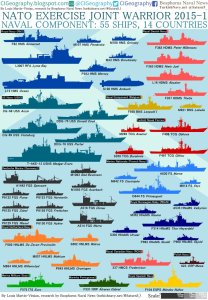
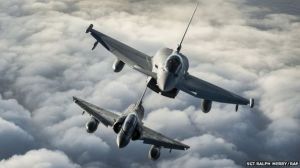
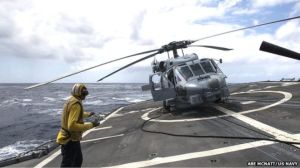

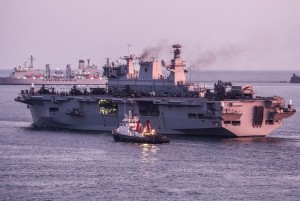
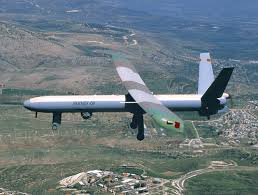



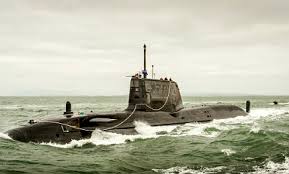

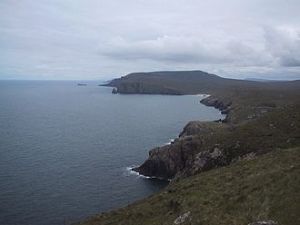
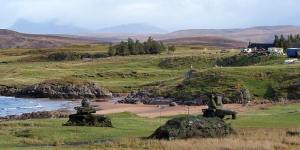
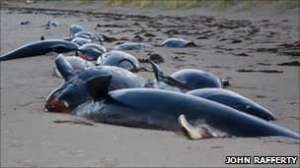
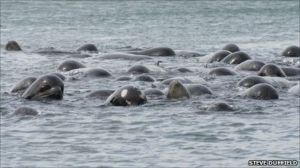
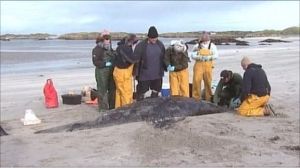

Leave a comment